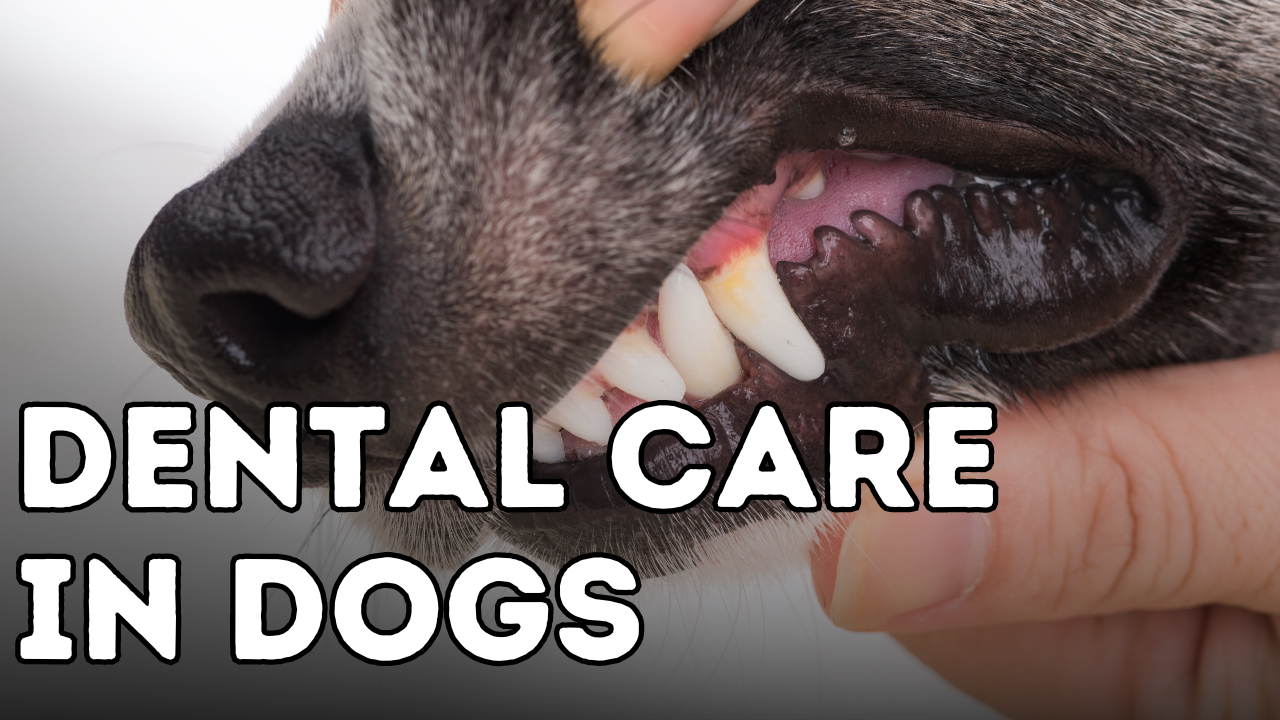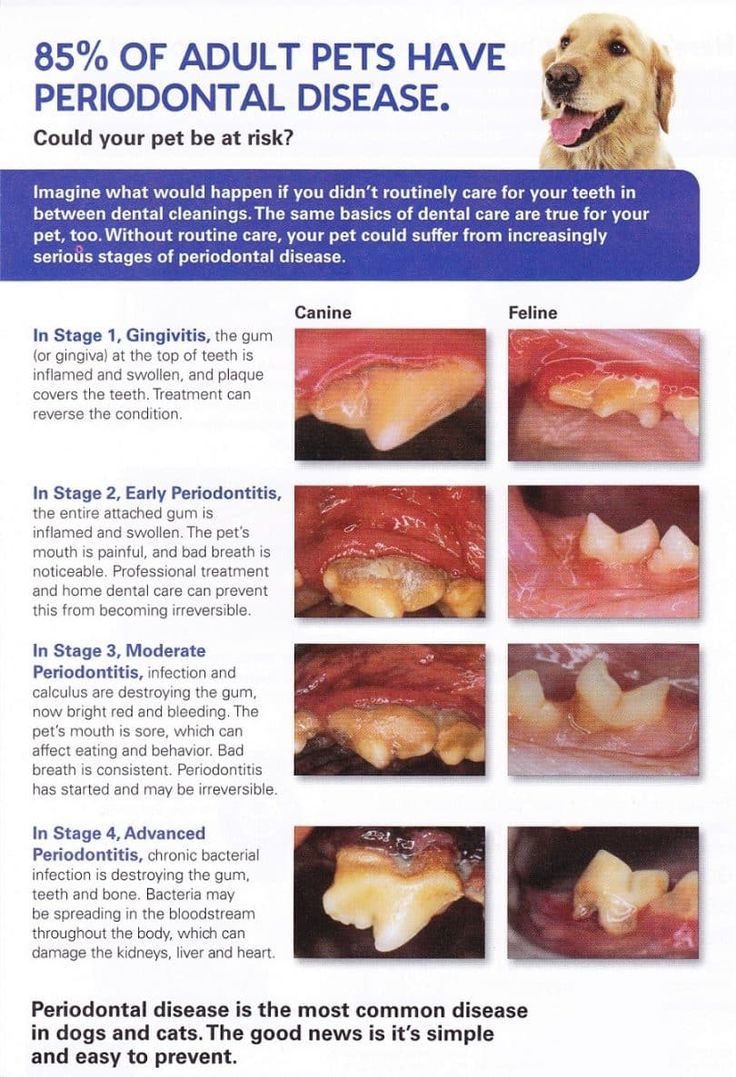Dog Teeth: Top 7 Natural Tips To Healing Dental Problems Now

Your dog’s dental health is crucial for their overall well-being, with periodontal (gum) disease being the most common issue diagnosed in dogs. By the age of three, 80% of dogs suffer from some form of periodontal disease. Poor dental health can lead to severe health problems, including heart, liver, and kidney disease, stroke, and diabetes. This article will explore the anatomy of dog teeth, causes of dental disease, and effective natural remedies to maintain your dog’s oral health at home.

Dog Teeth Anatomy and Early Development
Dogs begin life with deciduous (baby) teeth, similar to humans. These teeth start to erupt between the third and sixth weeks of life. By four months, puppies begin to lose these teeth, acquiring a full set of 42 adult teeth by the ages of 6-7 months. Sometimes, baby teeth that do not fall out are extracted during routine spay or neuter procedures at around 6-7 months.
Common Dental Problems in Dogs
After adult teeth have formed, dental issues may arise. Plaque, a thin layer of bacteria, accumulates on the teeth and can progress to tartar, leading to gum inflammation. Bacteria also thrive under the gum-line, causing gingivitis, which can result in tooth loss if untreated. Other issues include broken teeth and tooth root abscesses, which can cause swelling under the eye and pain when chewing.
Symptoms of Dental Disease
The signs of dental disease in dogs are similar to those in humans and include:
- Bad breath (halitosis)
- Reluctance to chew
- Redness at the gum line
- Visible tartar
- Loose teeth In advanced stages, periodontal disease can lead to systemic infections affecting major organs.
Natural Solutions for Dental Health
Diet and Dental Health
- Dental Diets: Some pet food companies produce specific dental diets that help reduce tartar buildup. These diets often feature larger kibble pieces that require more chewing and may include enzymes to reduce tartar formation.
- Natural Diets: Feeding raw meaty bones and windpipes can help keep teeth clean. However, ensure these bones are safe for your dog to prevent risks such as obstructions or salmonella infection. Briefly boiling bones can mitigate some risks.
Daily Dental Care Practices
- Brushing: Regular brushing is the most effective way to keep your pet’s teeth clean. Aim to brush your dog’s teeth daily, or at least twice a week, using a finger toothbrush and pet-safe toothpaste. Baking soda can also serve as a natural toothpaste.
- Healthy Treats: Offering raw vegetables like carrots can help clean your dog’s teeth while providing a low-calorie snack.
Supplements and Herbs for Dental Health
- Vitamin C: Often used by alternative practitioners, Vitamin C can boost the immune system and promote healthy gum and tooth tissue. Adjust the dosage if it causes diarrhea in your pet.
- Plaque Off: A natural seaweed-based product, Plaque Off is added to your dog’s food to help with oral care. It’s rich in vitamins, minerals, and natural iodine.
- Herbal Remedies: Calendula lotion can heal mouth ulcers and promote tissue healing, while chamomile can reduce teething pain in young pets. Myrrh can be applied topically to reduce gum inflammation.
Conclusion
Recognizing the signs of dental disease is crucial for maintaining your dog’s health. If you observe symptoms such as red gums, bad breath, or reluctance to chew, consult your veterinarian. Implementing the right dietary choices, regular brushing, and the use of effective supplements and herbs can help prevent and naturally treat dental issues in your dog.


I’ve been giving my dogs Pro Den since the end of October. I didn’t think it was working, but in the last couple of weeks, large flakes of plaque have been breaking off my malamute’s teeth. There’s still a lot to go, but this special seaweed does seem to work.
The weirdest thing is that my other dog has since begun eating seaweed on the beach every day, as if she suddenly realized it is edible now that I’ve been putting the powdered seaweed on her food. Apparently it’s not good for her as it hasn’t been rinsed and has too much salt, though, so I try to discourage it. Unfortunately she acts like it’s a mile long buffet :o)
I have not seen a small dog used for brushing teeth. (5# size) Their mouth is small and it is kind of hard to even get in enough to see. And they need the care of their teeth very much. I will keep watching and hope I could see one doing their teeth and how to. Thanks so much
Maltese has hurting.tooth infection
My dog has periodontal disease and they already have removed and I cat keep up with the tartar on her teeth! My vet is never available and won’t help unless he sees her. That’s 4 to 5 months out. I have som inflammation meds from when she was seen and had (28 teeth removed) and not even the emergency docs will see her. She’s 8 years old and I was told to keep feeding her purine dog food for sensitive stomach and skin the salmon one. It’s been good since 2022 a year ago but now she is cry ing and her tongue is swollen and hanging out her mouth. I’m not even at home am in awhile other state while my son is trying to care for her. I can’t get her in to see anyone. And in a spot I can’t do anything. My son gave her some of the inflammation meds and that helped and got her a bit of water. She’s not eating in the last 24 hours. And I don’t know what to do from here. She’s about 8 years old and a chihuahua.
PLEAE HELP
THANK YOU, Rinett
Take her to emergency room!!
Can a dog heal from hemanglomas
Yes and here are some related articles you can follow:
SOLUTIONS
A DIAGNOSIS AT YOUR VETERINARIAN. If your pet has any of the above signs, especially anemia and increased respirations, have an exam and appropriate tests (X-rays, and Blood Work). Surgery is advised for the skin tumors, and in certain cases of splenic tumors (especially if it has not spread to the lungs or other organs).
WHAT ARE YOU EATING? Cancer cells thrive on carbohydrates and proteins, but cannot grow as fast with fats. Certain veterinary diets have been designed for this, but you can also make your own low-carbohydrate, high-fat cancer diet. See Cancer (previous section) for a home cancer diet.
KEEP HER EATING. Pets with cancer often have a reduced appetite. It is of utmost importance that they keep eating. Try warming up the food. Add a tasty liquid or broth. Some dogs and cats will respond to the smell of garlic; try adding garlic powder.
ANTIOXIDIZE. Antioxidants have been shown to slow the growth and spread of some types of cancer. Vitamin C, Vitamin E and Selenium are the most effective. Vitamin C dose: dogs 100 mg per 10 lbs of body weight twice daily; cats, 250 mg twice daily. Vitamin E dose: dogs and cats 100 IU per 10 lbs body weight twice daily. Selenium dose: dogs and cats, 25 ug per 10 lbs twice daily.
FLAVONOIDS. These are compounds in a class of their own. They compose the thousands of structures that give the bright color to fruits and vegetables. They are antioxidants as well as having anti-cancer properties. These include flavones, (apigenin), isoflavones (genistein), and flavonols (quercetin). Purchase a mixed bioflavonoid product that contains polyphenols, particularly EGCG (epigallocatechin-gallate), which is the specific flavonoid isolated from green tea. The dose for a 10 lb dog or cat is 250 mg daily.
FATTY ACIDS ARE ESSENTIAL. Omega 3 fatty acids are great anti-inflammatories and have been shown to prevent the spread of cancer. Ground flax or flax oil is the best source for dogs: the dose is 1 tsp of ground flax per cup of dog food, or 1000 mg of flax oil per 10 lbs of body weight daily. For cats, the liquid form is the only option, and they should receive 500 mg twice daily of flax or fish oil, or a supplement such as EFA Caps purchased from your veterinarian.
VITAMIN A. This has cytotoxic effects (cancer-cell killing) at high doses. The dose is 400 IU per lb of body weight daily.
ARGININE. This amino acid appears to enhance immune function and may inhibit the growth of some tumors. The dose is 250 mg per 10 lbs of body weight daily.
GLUTAMINE. This amino acid may be helpful in inhibiting tumor growth as well as in dealing with some of the adverse effects of chemotherapy. The dose is 500 mg per 10 lbs of body weight daily.
MUSHROOMS. Certain mushrooms have immune-stimulating and anti-tumor activity. Some of these include Reishi, Maitake, and Shiitake. The dose is 25 mg per 10 lbs of body weight daily.
CURCUMIN. This is part of the spice Turmeric. It may inhibit the growth as well as spread of tumors. It has also been shown to decrease the side effects of chemotherapy. The dose is 250 mg per 10 lbs of body weight daily.
DRINK YOUR JUICE. A number of veterinarians have had great success using a juice found in health food stores. Noni Juice is made from the Morinda plant of the South Sea Islands. The dose is 1/2 teaspoon per 10 lbs of body weight given twice daily.
HERBAL:
This is a very complex, variable disease that requires a variety of approaches – there is not just one herbal ‘magic bullet’. The best thing is to pick up early changes in your pet, from abnormal swellings, to decrease in appetite, to difficulty breathing.
If your pet’s body is not in optimum health, then their immune system is not able to deal with the inevitable lumps and bumps that arise.
Herbs are important in supporting your pet, to help him deal with cancer. The most important herbs are ones that will help your pet’s organs rid themselves of waste products, via the liver, kidneys and lymphatics. Essiac and Hoxsey Formulas do this.
Tonic Herbal Support
1 part Red Clover, 1 part Dandelion, 1 part Garlic, 1 part Astragalus. Dose: 1 ml per 10 lbs twice daily.
Herbs can help strengthen the immune system.
ARTEMISININ (WORMWOOD). Has a scientific basis, and is under early research and testing for cancer treatment at the University of Washington. It kills cancer cells as many cancerous cells have high iron content. It has been shown to reduce new blood vessel growth, and as this is the primary way Hemangiosarcoma spreads, this should be the first herb that you use. Dose: 20 mg per 10 lbs of body weight daily.
GINSENG. A popular immune stimulant, it also appears to speed up wound and abscess healing. The Ginseng dose is 30 mg per lb of the dried herb twice daily, or 1 drop per lb twice daily of the tincture.
ECHINACEA. This is an effective herb for stimulating the immune system. The dried herb dose is 100 mg per 10 lbs; the tincture dose is 1 drop per lb twice daily.
ASTRAGALUS. This traditional Chinese herb has been shown to stimulate certain cells important for the immune system. The dose is 600 mg per 10 lbs of the dried herb, or 1 drop per lb twice daily of the tincture.
GREEN TEA (CAMELLIA). Stimulates the immune system and inhibits tumor growth: standardized green tree extract is dosed at 50 mg per 40 lbs of body weight daily.
ESSIAC TEA. Contains a combination of herbs that inhibit tumor growth and spreading.
GARLIC. Has antioxidant and immune-enhancing properties. It is best used in conjunction with other antioxidants. When given at high doses it can cause anemia in your pet, so it is best used under the supervision of your veterinarian. The dog dose is 1/4 clove per 10 lbs of body weight daily; the cat dose is 1/8 clove daily.
HOMEOPATHIC:
THUJA. The first homeopathic remedy that many homeopaths advise for any type of canine or feline cancer. The dose is 30C given once-twice daily for at least 30 days.
SILICA. For common dog and cat tumor, lymphosarcoma; with weight loss. Dose 30C 1-2 times daily for 30 days.
PHOSPHORUS. For bleeding tumors, especially growths on the skin that bleed. The typical dose and schedule is 6C once daily for 4 weeks and evaluate effectiveness.
NAT MUR. Specific for cats with cancer, such as vaccine induce fibrosarcoma. Dose 6C twice daily for 2 weeks and assess if it is working.